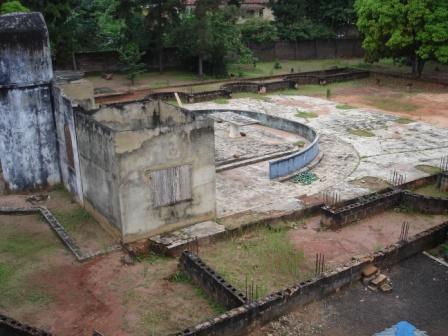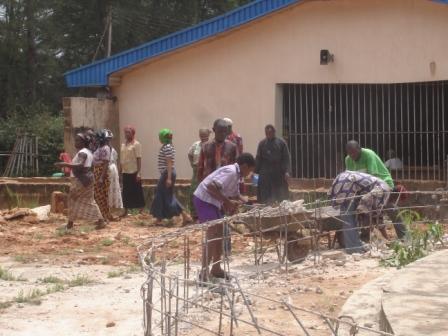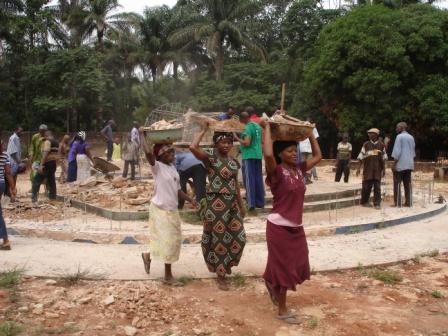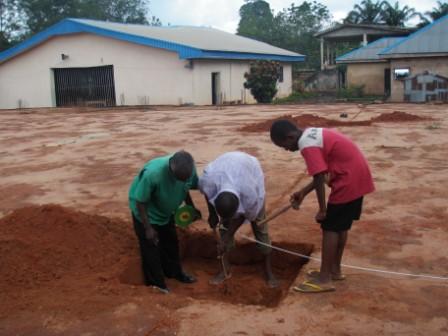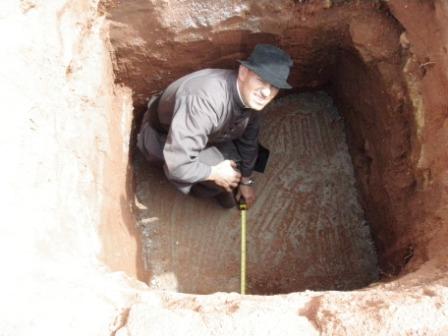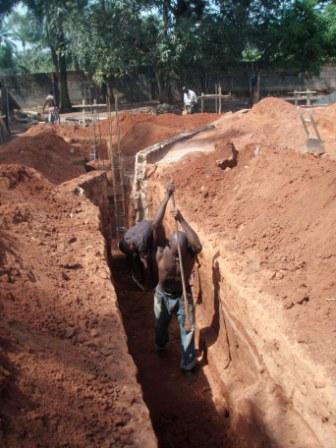
History of the Construction
Building a Traditional Church in Africa
It may not be the easiest place to construct a beautiful, classically designed traditional Catholic church, but where there is a will there is a way. Back in 1998 the foundations of the main church were put in place, Masses were said on that site until it was dismantled in 2008 after the smaller chapel of Our Lady of Perpetual Help had been completed.
Originally the outdoor shrine was comprised of a large statue of the Blessed Virgin Mary and an altar in front of that statue, to which were added two sacristies and a concrete altar rail some time after. Foundations surrounded the original shrine (see left) and the whole of the shrine was covered by a large corrugated iron roof held up by steel poles. It made for good air conditioning, but was open to all the elements including the heavy tropical rains. During heavy rains the parishoners would all move to the seats closer to the centre which were further away from the rain should the wind be blowing. Quite often during Masses the candles would blow out, so the Mass servers were often kept busy.
In early 2009 work began in earnest on the main church. The sanctuary of the original shrine was demolished (all by hand - including reinforced concrete!) by the parishoners. Although it was in the middle of the dry season the parishoners would work with wheelbarrows, sledgehammers, crowbars and simple 'head-pans' to break and carry the broken concrete. The concrete was particularly hard to break without mechanical means and many an hour was spent using hammers and muscle power.
Particularly impressive was the willingness of all those involved to do the most menial of tasks. Without many wheelbarrows, the women would have 'head-pans' filled by men with shovels and the carry heavy loads of broken concrete on their heads. Some would even balance broken concrete slabs on their heads.
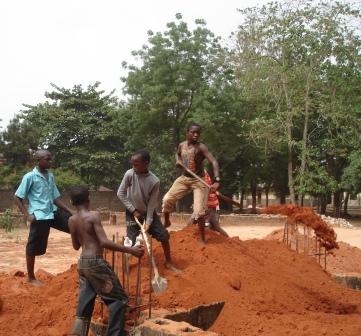
In October 2009 the decision was taken to expand the size of the sanctuary and sacristies, so new columns needed to be placed and the footings adjusted. The marking out having been done the work of hand-digging began and (as usual) the altar servers were only too keen to participate in the activities. All of the new column pads needed to go down into the virgin soil, so some of them had to go to a depth of over 3 metres (9 feet). Then the blinding of the bases was done, and exact measurements were put in by Fr Sumich (who was a Civil Engineer before entering the priesthood).
The parishoners, of all ages came and dug through the earth, mixed the concrete, carried water, laid blocks and backfilled the newly placed columns, so that the new profile gradually took shape.
And NOW, with all the fill and column bases in place we are ready to begin the flooring. The Bishop Emeritus is hoping that the floor will be ready in time for his Mass on 1st August, so that Mass may be celebrated on the new site. The big need therefore is to raise the money to put down a 1,200 sq metre floor. We need your help !
> Album of the construction <
